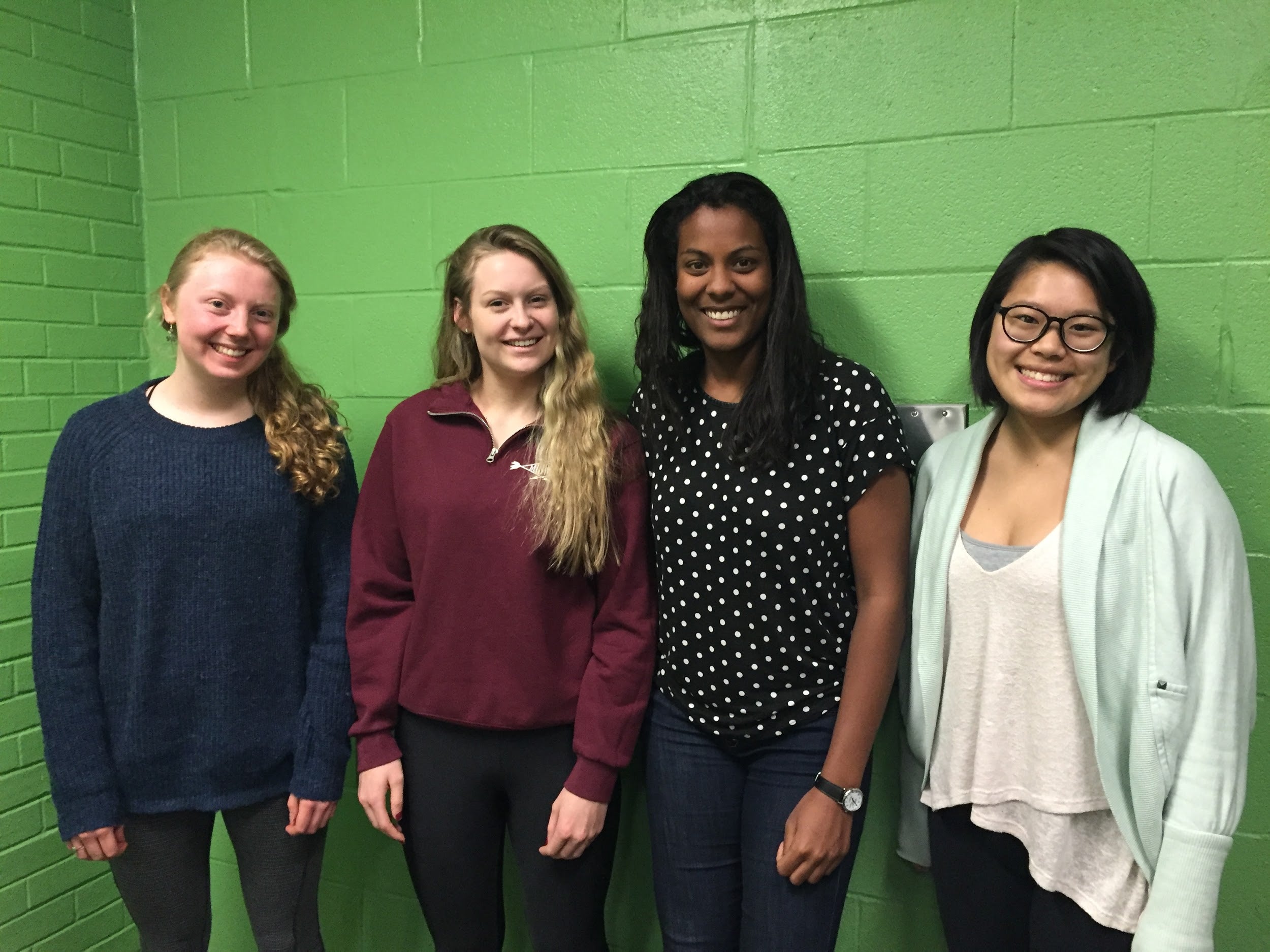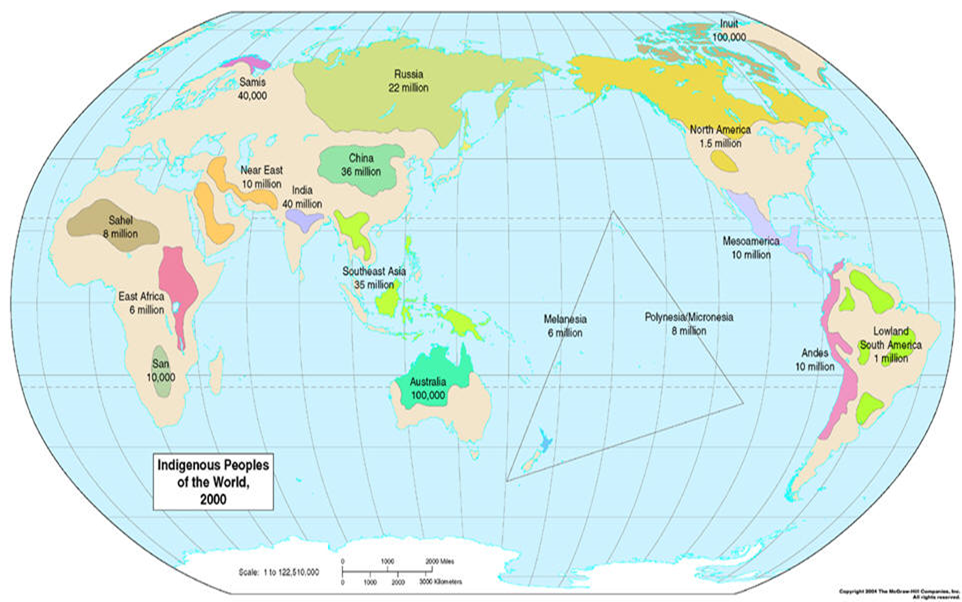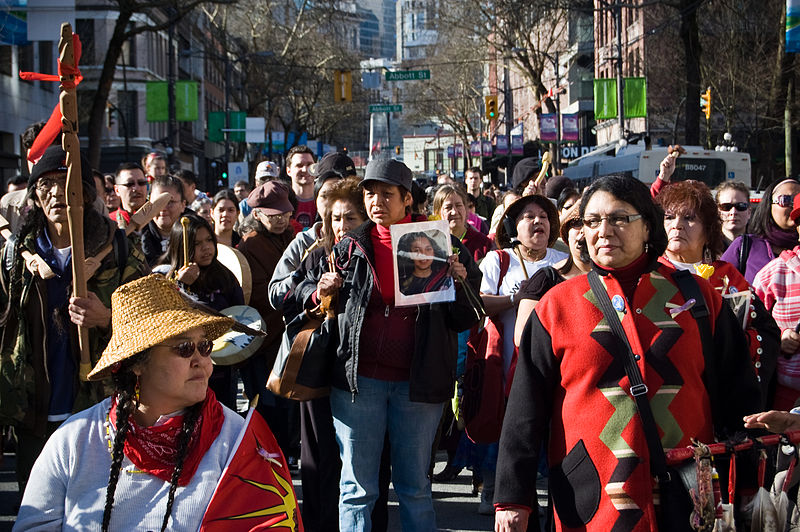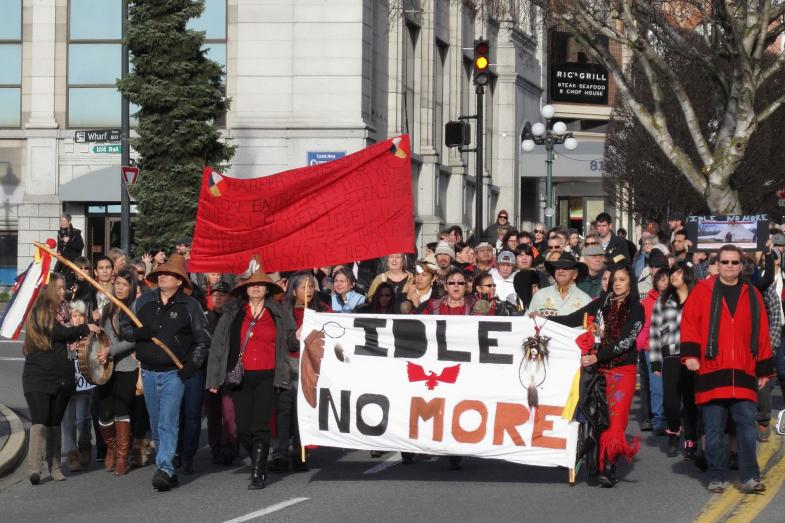Written by: Brianne Litt, Devina Lookman, Kate McDonald, Lauren Preiditsch, Indra Sarju

In photo (Left to right): Kate McDonald, Brianne Litt, Indra Sarju, Devina Lookman. Not pictured: Lauren Preiditsch
There are approximately 370 million Indigenous people in the world belonging to 5,000 different groups, in 90 countries worldwide. Indigenous people are present in every region with approximately 1,400,685 Indigenous people living in Canada (Government of Canada, 2011).

A primary issue facing Canada today is the devastating number of missing Indigenous women, and the lack of priority given to find them. The documentary Finding Dawn puts a human face to this national tragedy, and explores the lives and experiences of some of the estimated 500 missing and murdered Indigenous women in Canada over the past 30 years.
As International Development students, it is important to consider past, present and future circumstances of issues such as this. The past involves the history of Indigenous abuse in residential schools which helps to understand the present attitudes surrounding the lack of response by police towards cases involving Indigenous people, and ultimately helps form appropriate solutions and policies that are being proposed by Prime Minister Trudeau.
Regarding the past, negative attitudes formed around indigenous people began with residential schools where they were seen as weak and vulnerable, and often mistreated. The situations and experiences shown in Finding Dawn show that these attitudes still exist today and have escalated to violence against Indigenous women. This violence is exemplified in the fact that female homicide is disproportionately high for Indigenous women, with Indigenous women only making up only 3% of the population yet accounting for 10% of all female homicide in Canada (Native Women's Association of Canada, n.d.).

Not to underplay the severity and reality of violence against Indigenous women, but we cannot help but wonder about cases of missing and murdered Indigenous men. Domestic abuse often focuses on women as the victims, which overlooks the abuse in which men receive. It would be valuable to learn more about this issue from both sides of the party.
In a modern context, there has been a clear transformation of pre-existing portrayals of Indigenous women and men. Due to the recent development between the Canadian government and the Indigenous people living in Canada, there has been remobilization of the term ‘Indigenous’ as social movements as well as a legal category. Prime Minister Trudeau has opened a public forum for discussion and plans to implement a 5-point plan to improve the relationship with Indigenous people including an examination of legislation and a significant investment in First Nations education.

Please feel free to contact us:
Brianne Litt, Devina Lookman, Kate McDonald, Lauren Preiditsch, Indra Sarju
For More Information:
In the News
Aboriginal women accuse police of sexual violence
Informative Websites
Residential School Background
Residential Schools: Impact on Aboriginal Students' Academic and Cognitive Development (PDF)
Definition of Indigeneity
Official Definitions of Indigeneity
Citations/References:
Aboriginal Peoples Television Network. (2015, October 23). Eight Quebec police officers
suspended in wake of alleged sexual assaults on Aboriginal women - APTN National News. Retrieved February 22, 2016, from: http://aptn.ca/news/2015/10/23/eight-quebec-police-officers-suspended-in-wake-of-alleged-sexual-assaults-on-aboriginal-women/
Government of Canada. (2011, February 2). Canadians in Context - Aboriginal Population.
Retrieved February 22, 2016, from: http://well-being.esdc.gc.ca/misme-iowb/.3ndic.1t.4r@-eng.jsp?iid=36
Native Women's Association of Canada. (n.d.). Fact Sheet Missing and Murdered Aboriginal
Women and Girls. Retrieved February 22, 2016, from: http://www.nwac.ca/wp-content/uploads/2015/05/Fact_Sheet_Missing_and_Murdered_Aboriginal_Women_and_Girls.pdf
Welsh, C., Eriksen, S.-E., National Film Board of Canada., & Women Make Movies (Firm).
(2006). Finding Dawn. New York, NY: Women Make Movies.
Photo Credits:
Bizzy, Chris. (2010, February 14). 19th annual Women's Memorial March. Retrieved from https://commons.wikimedia.org/wiki/File:Womens_memorial_march.jpg.
Paterson, R.A. (2012, December 21). Idle No More (Victoria). Retrieved from https://commons.wikimedia.org/wiki/File:Idlenomore_victoria.jpg.
The McGraw-Hill Companies. (2004). Map of Indigenous People of the World [PowerPoint slides]. Retrieved from https://www.westga.edu/~gvanvale/map_of_indigenous_people.htm.